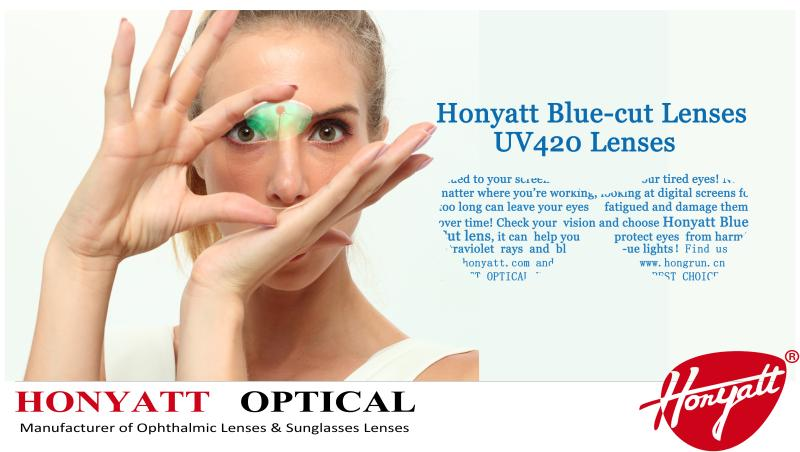
About Blue Light and Blue Block Lenses
What is "blue light"?
Blue light is considered to be between 500-381nm of the light spectrum. When I say considered I mean that there is disagreement as to exactly where different light falls into the spectrum. I use 500-381nm because that is the range defined by Elaine Kitchel, M.Ed in her paper, The Effects of Blue Light on Ocular Health

Common Misconception #1 - All Blue Light Is Harmful.
Not true. Some blue light is necessary for good vision.
"Not all blue light is bad. The labeled blue-turquoise light range, which is from 495 nm to 465 nm, is essential to our vision, the function of our pupillary reflex, and in general to human health. It also helps to regulate our Circadian sleep/wake cycle.11 So blue light in general can have healthy affects on vision as well as the body, and it is this blue-turquoise light that tends to have these beneficial effects. Inadequate light exposure means inadequate blue-turquoise light, which can throw off our Circadian biological clock and our sleep/wake cycle. So this blue-turquoise light really plays a vital role in the general health of the individual." - Dr Ronald Melton, OD from The Lowdown on Blue Light: Good vs Bad and It's Connection to AMD; Review of Optometry February 2014
What part of blue light is bad?
Based on current research, the most harmful part of the near UV-A blue light spectrum is 455nm-415nm. This range was determined from research done by the Paris Vision Institute in 2008. This 40nm band causes the most retinal damage.
Depending on whose scale you are using, between 20% and 30% off the blue light spectrum is harmful.
UV400 lenses filter 400-280nm (UV-A and UV-B). Visible light is 780-380nm.
Manufacturers of the new blue block AR coatings are trying to keep the explanation for effectiveness simple sounding so they are saying that 20% of blue light (that 40nm band) is reflected away and the remaining beneficial blue light is allowed through.

Common Misconception #2 - All Blue Light Needs To Be Blocked.
Not true. Because some blue light is beneficial, only some (20-30%) blue light needs to be blocked. This is where the newer "blue blocking" technologies come in. You want good light coming to your eyes and the bad light filtered out. There are 2 basic solutions, light blue block tints and blue block anti-reflective coatings.
Common Misconception #3 - Blue Block Lenses Must Be Deep Yellow
Certain brands of eyewear with lenses deeply tinted yellow or amber will filter blue light but the problem with some of these is that they filter all blue light and that's not what you want. Dr Ronald Melton again,
"The traditional blue blockers do not discriminate in the blue light spectrum. They just block all the blue light. This new lens technology is based on laboratory studies over a four-year period of time by a high-class group of scientists as well as clinicians who came up with some very important data that allowed them to zoom in on the light that needed to be blocked and the light that needed to get through."
Blue block lenses do not need to be tinted an intense yellow. As a matter of fact, they can be lightly tinted, and be other colors like brown or even grey.-
Honyatt Blue block with AR Coating
Traditional anti-reflective coatings reflect unwanted light and let beneficial light through. Honyatt Blue block AR coating additionally reflect off unwanted blue light and allow the beneficial blue light through. These lenses look very clear and do not have a tint. (Effective UV and blue light protection with our single vision Blue block lenses is ~ from 470-280nm) Available in powers from zero to -8.00 or +6.00 in single vision stock lenses or prescription lenses.

ABOUT HONYATT OPTICAL
Honyatt Optical is a manufacturer of
Ophthalmic Lenses & CR39 Sunglasses Lenses, do OEM for top sunglasses
brands, eyewear companies, Distributors, Retailers and RX Labs.
E-mail: info@honyatt.com
Tel: +86-511-85778699
Fax: +86-511-85778688
Add: Danyang, Jiangsu, China.
Copyright @ 2020 Dangyang Honyatt Optical Co., Ltd. 苏ICP备12039249号





Hot Line

